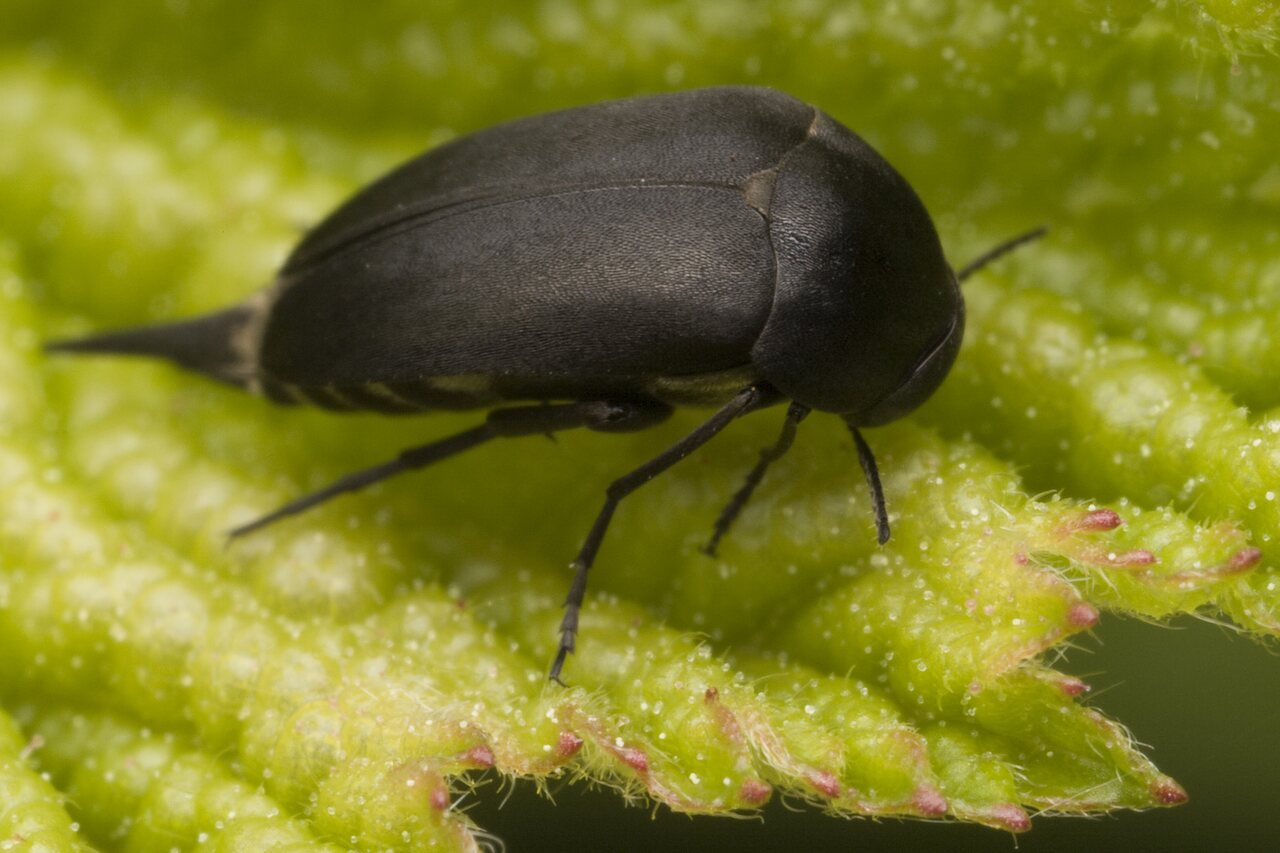
Mordella holomelaena · dygliavabalis
ukbeetles.co.uk/mordella-spp This very widespread though generally rare Palaearctic species occurs sporadically throughout Europe north to the UK and southern provinces of Fennoscandia end extends to the far east of Russia and Japan. Adults are active over a short season from June to August; they are thermophilic and have been recorded from a wide range of flowers which they visit to feed on pollen, typically in open deciduous woodland but also on calcareous grassland. Little is known of the biology but the larvae are known to develop in decaying hardwoods and adults have been recorded from under bark.
6.5-8.0mm. Body entirely black, appendages black to dark brown, dorsal surface with dense short pubescence throughout. Base of head evenly curved to the posterior margins of the eyes, vertex and frons evenly convex, eyes weakly convex and finely pubescent; occupying most of the lateral margin, cheeks converging to a produced frontoclypeal area and the anterior margin of the labrum broad and slightly sinuate. Antennae inserted laterally in front of the eyes, the 2 basal segments short and near parallel-sided, 3 & 4 elongate and gradually broadened from a narrow base, 5-7 much broader throughout and 8-10 weakly serrate, the terminal segment rounded apically. Pronotum almost semi-circular (from above), broadest in front of rounded posterior angles and strongly sinuate across the base. Scutellum triangular, slightly sinuate laterally and rounded apically. Elytra gently curved laterally and narrowing from before the middle to separately curved apical margins, surface smooth but for a weakly raised and narrow sutural ridge, finely and densely punctured and pubescent throughout. Pygidium rather abruptly narrowed beyond the middle (view from directly above).Front and middle legs long and narrow, the tibiae with only a very fine spur on the inner apical angle, segments 3 and 4 of the front tarsi short; the fourth almost quadrate and distinctly emarginate across the apex. Hind legs long and robust, the tibiae with a long stout spur before the apical margin and lacking a dorsal ridge although often with an irregular row of granules, laterally with a groove parallel to the apical margin but lacking the series of transverse grooves seen in many genera. All claws with a series of fine teeth along the inner margin. Males can be determined by the almost circular second maxillary palpomere.
‥- model
- Canon EOS 20D
- f
- 16
- EV±
- 0.0 EV
- speed
- 1/250 s
- flash
- yes, mode: compulsory
- ISO
- 100
- focal
- 65 mm
- mode
- auto
0 comments
Add a comment